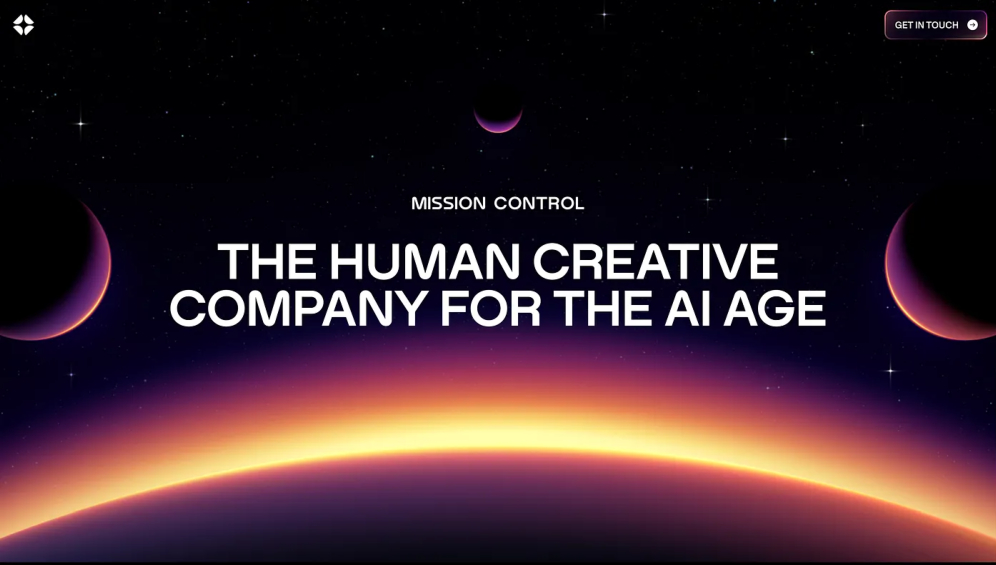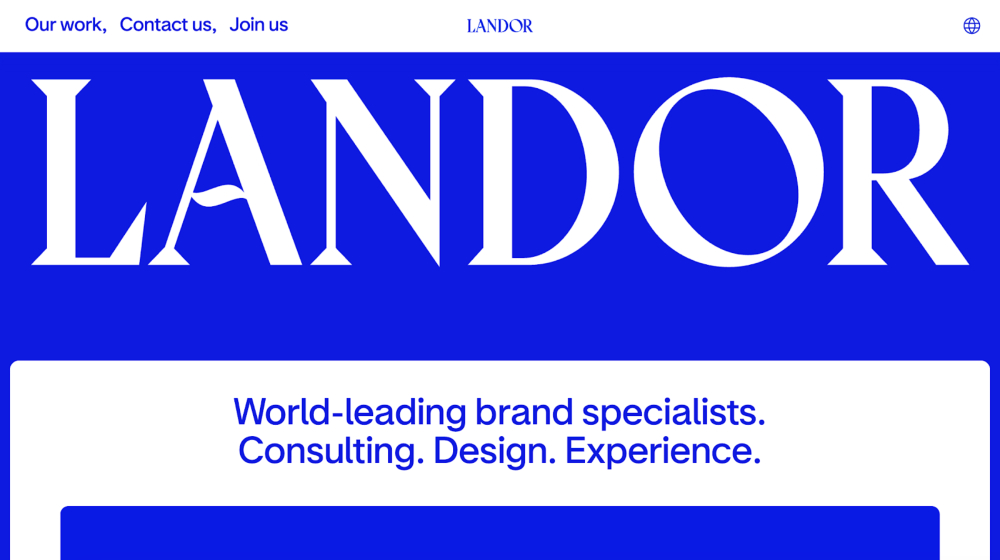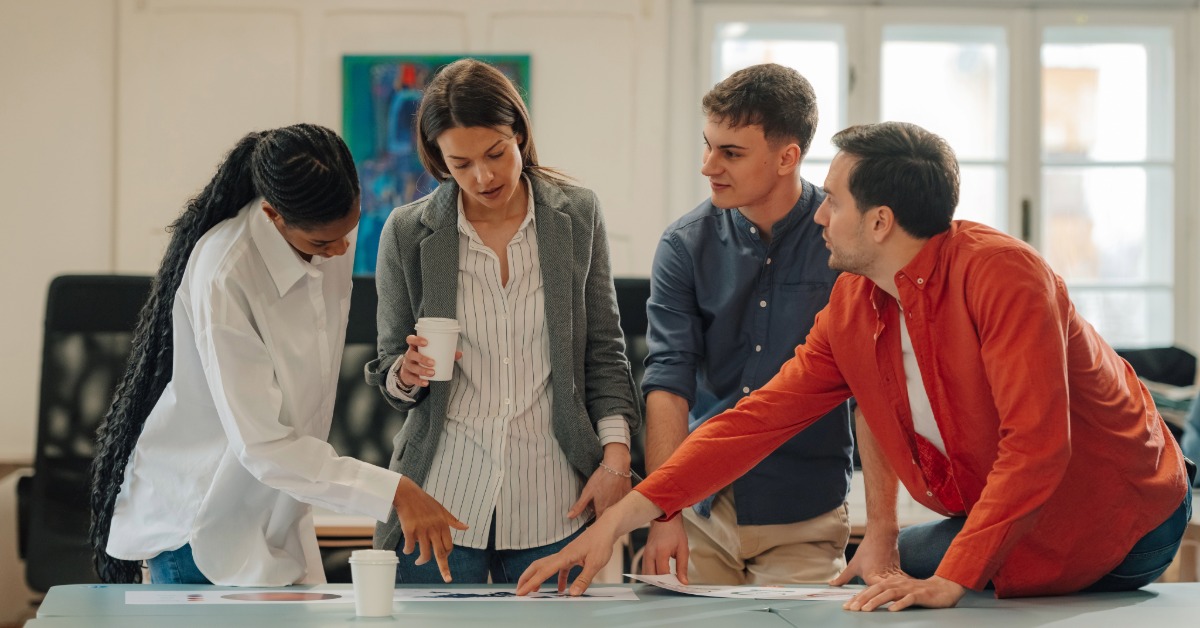Key Takeaways
- Differentiate your business in a crowded marketplace by investing in a strategic brand identity from a top agency.
- Develop a successful brand by combining deep market research with a comprehensive visual design strategy.
- Build a loyal customer base by creating a brand that forms a genuine emotional connection with people.
- Discover that elite branding agencies build entire visual systems, not just simple logos, to solve complex business problems.
Brand design creates the face of every company.
In San Francisco, where startups become giants overnight and established companies reinvent themselves constantly, brand design agencies hold extraordinary power. These five agencies don’t just create logos—they build the visual languages that connect billions of people with the brands they love.
The Best Branding Agencies in San Francisco Rankings
1. Clay: The Digital Brand Artists

Clay approaches brand design like fine art. Every element serves both aesthetic and strategic purposes. Their brands don’t just look beautiful—they create emotional connections that drive customer loyalty and business growth.
The agency specializes in brands that need to stand out in crowded digital environments. Their designs work perfectly across social media, mobile apps, and interactive experiences. Clay understands that modern brands live primarily in digital spaces and designs accordingly.
Clay’s collaborative process involves clients deeply in creative decisions. They believe great brands emerge from partnership rather than isolation. This approach creates brands that authentically represent company values while appealing to target audiences.
Signature expertise: Digital-first brand experiences and emotional design
Industry recognition: Numerous design awards and industry acclaim
Notable transformations: Coca-Cola digital initiatives, Slack brand evolution
Pricing: $$
2. Mission Control: The Future-Forward Creators

Mission Control represents brand design’s next evolution. They combine traditional design principles with artificial intelligence and emerging technologies. Their brands feel simultaneously timeless and cutting-edge.
The agency focuses on ambitious companies building tomorrow’s economy. Cryptocurrency platforms, artificial intelligence startups, and next-generation fintech companies choose Mission Control for brands that signal innovation and reliability simultaneously.
Mission Control’s AI-enhanced design process allows rapid iteration and testing. They can explore hundreds of brand variations quickly while maintaining human creativity and strategic thinking. This efficiency lets them deliver premium results at competitive timelines and pricing.
Signature expertise: AI-enhanced brand development for emerging technologies
Industry recognition: Rising star in brand design innovation
Notable transformations: Next-generation fintech and crypto platforms
Pricing: $$
3. Interbrand: The Global Brand Powerhouse

Interbrand stands as the undisputed leader in brand strategy and design. Their San Francisco office serves as the West Coast headquarters for a company that has shaped more household names than any other agency. They created the visual identity for brands worth trillions of dollars combined.
What separates Interbrand from competitors is their analytical approach to creativity. They don’t guess what works—they prove it. Their brand valuations appear in major business publications worldwide. Fortune 500 companies trust them with complete brand transformations worth hundreds of millions of dollars.
Interbrand combines strategic thinking with world-class design execution. They research market psychology, analyze competitor positioning, and study cultural trends before creating a single visual element. This methodical approach produces brands that dominate industries for decades.
Signature expertise: Global brand strategy and comprehensive identity systems
Industry recognition: Created brands valued at over $500 billion collectively
Notable transformations: BP, Samsung, Nissan
Pricing: $$$$$
4. Landor & Fitch: The Innovation Specialists

Landor & Fitch brings over 75 years of brand design experience to San Francisco’s innovation economy. They’ve evolved from creating airline identities to building brands for the digital age. Their work appears on everything from smartphone apps to space missions.
The agency excels at brand evolution rather than revolution. They help established companies modernize their identities without losing customer recognition. Their designers understand how brands must adapt across different media while maintaining core recognition elements.
Landor & Fitch’s San Francisco team works extensively with technology companies expanding globally. They understand how American brands translate to international markets and how global brands adapt to local preferences. This cross-cultural expertise proves invaluable in today’s connected economy.
Signature expertise: Brand evolution and international expansion
Industry recognition: 75+ years of continuous brand leadership
Notable transformations: FedEx, Airbnb, BMW
Pricing: $$$$$
5. Lippincott: The Strategic Brand Builders

Lippincott combines management consulting with creative excellence. Their brand strategies read like business plans because they understand that successful brands must deliver measurable results. They create identities that drive revenue growth and market share expansion.
The agency’s San Francisco office focuses heavily on technology and healthcare brands. They understand the unique challenges these industries face when communicating complex ideas through simple visual systems. Their brands make complicated companies feel approachable and trustworthy.
Lippincott’s research capabilities rival those of major consulting firms. They conduct extensive market studies, consumer interviews, and competitive analyses before beginning design work. This foundation ensures every creative decision supports broader business objectives.
Signature expertise: Strategy-driven brand development and market research
Industry recognition: Consistently ranked among top brand consultancies
Notable transformations: Samsung, eBay, Starbucks
Pricing: $$$$$
The Science Behind Brand Success
Brand design operates at the intersection of psychology, business strategy, and visual communication. San Francisco agencies excel because they understand this complexity. They don’t create pretty pictures—they solve business problems through visual means.
Recognition Builds Trust
Consistent visual identity creates familiarity. Familiar brands feel safer to consumers making purchasing decisions. This psychological principle drives billions of dollars in business value annually.
Differentiation Drives Choice
Markets overflow with similar products and services. Strong brand design helps companies stand out from competitors. Visual differentiation often determines which companies succeed in crowded markets.
Emotion Influences Decision
People buy based on feelings, then justify with logic. Brand design creates emotional connections that influence purchasing behavior. The best brands make customers feel something meaningful about their choices.
Why San Francisco’s Branding Agencies Rule Brand Design
The city’s unique ecosystem creates perfect conditions for brand innovation. Agencies work directly with companies reshaping entire industries. They see emerging trends months before other markets and adapt brand strategies accordingly.
San Francisco’s venture capital community demands brands that communicate complex ideas simply. Investors make quick decisions based partly on visual presentation. This pressure creates brands that work immediately and effectively.
The city’s talent pool draws creative professionals from around the world. Agencies can recruit designers who understand both artistic principles and business strategy. This combination produces brands that satisfy both aesthetic and commercial requirements.
Beyond the Logo: Modern Brand Systems
Today’s brands extend far beyond simple logos. They encompass entire visual systems including typography, color palettes, illustration styles, photography approaches, and interactive elements. San Francisco agencies excel at creating comprehensive brand languages.
Digital platforms require brands that work across countless contexts. The same identity might appear on business cards, mobile apps, billboards, and virtual reality experiences. This complexity demands sophisticated design thinking and technical expertise.
Measuring Brand Success
Professional brand design agencies track results carefully. They measure brand recognition, customer preference changes, and business performance before and after brand launches. This data proves that great design generates measurable returns on investment.
Questions Every Client Should Ask
What are the best branding agencies in San Francisco?
The top branding agencies in San Francisco include Clay for digital-first creative excellence and emotional design, Mission Control for AI-enhanced future-forward innovation, Interbrand for comprehensive global strategies, Landor & Fitch for brand evolution expertise, and Lippincott for strategy-driven development. Each of these branding companies offers distinct approaches to building powerful brand identities.
How much should companies budget for professional brand design?
Professional brand design investments typically range from $50,000 to over $1 million depending on project scope and agency tier. Simple identity refreshes start around $25,000, while complete brand overhauls for major companies can exceed $2 million. Consider this an investment in long-term business value rather than a one-time expense.
What’s the difference between brand design and logo design?
Logo design creates a single visual mark, while brand design develops complete visual identity systems. Brand design includes logos, typography, color systems, imagery styles, and application guidelines. Professional brand design ensures consistency across all customer touchpoints and marketing materials.
How long does a typical brand design project take?
Most brand design projects require 3-6 months from initial strategy through final delivery. Discovery and research phases take 4-8 weeks. Design development needs 6-12 weeks. Implementation and guidelines creation require additional 4-8 weeks. Complex global rebrands can take over a year to complete.
Should startups invest in professional brand design early?
Yes, especially in competitive markets like San Francisco. Strong brands help startups attract investors, recruit talent, and acquire customers more effectively. Early brand investment prevents expensive redesigns later and establishes professional credibility from launch.
How do agencies measure brand design success?
Agencies track brand recognition surveys, customer preference studies, and business performance metrics. They measure awareness increases, purchase intent changes, and revenue growth following brand launches. The best agencies provide detailed reports showing return on brand investment.
What makes San Francisco brand agencies unique?
San Francisco agencies understand technology, innovation, and global markets better than most. They work with companies building the future and see trends before they reach other cities. Their proximity to venture capital and tech leadership creates unique insights into effective brand communication.
Can established companies change their brands without losing customers?
Yes, when done strategically. Professional agencies research customer attachment to existing brand elements and preserve what works while updating outdated aspects. Gradual evolution often works better than dramatic changes for established brands with loyal customers.
What information should companies prepare before hiring a brand design agency in San Francisco?
Gather existing brand materials, competitive landscape analysis, target audience research, and business objectives. Document current brand challenges and future growth plans. Prepare realistic budgets and timelines. The more information agencies receive upfront, the better their strategic recommendations will be.
How do agencies approach global brand consistency?
Top agencies research cultural preferences and local market conditions while maintaining core brand recognition elements. They adapt colors, typography, and messaging for different regions while preserving essential brand DNA. This balance requires extensive cultural knowledge and testing.
What role does digital design play in modern branding?
Digital applications now dominate brand experiences. Agencies must ensure brands work perfectly on mobile devices, social media, websites, and apps. Digital-first thinking influences every design decision from color choice to typography selection. Traditional print considerations remain important but secondary.
Should companies work with local agencies or global firms?
Both approaches offer advantages. Local agencies understand regional markets and provide personalized attention. Global firms bring extensive experience and international capabilities. San Francisco offers excellent options in both categories, so choose based on project needs and budget rather than location alone.
How often should companies update their brand design?
Major brand overhauls typically happen every 10-20 years, while smaller updates occur every 3-5 years. Technology companies may need more frequent updates due to rapid industry evolution. Market research and customer feedback help determine optimal timing for brand refreshes.
What’s the biggest mistake companies make with brand design?
The most common mistake is focusing solely on visual appeal rather than strategic business objectives. Beautiful designs that don’t communicate effectively or support business goals waste investment. Always prioritize strategic thinking over aesthetic preferences when making brand decisions.
How do agencies handle intellectual property and legal considerations?
Professional agencies conduct thorough trademark searches, ensure design originality, and provide proper legal documentation. They work with intellectual property lawyers when necessary and guarantee clients receive full rights to approved designs. Always clarify ownership terms before starting projects.
Frequently Asked Questions
What is the main difference between creating a logo and developing a full brand identity?
A logo is just one visual symbol of your company. A full brand identity is a complete visual system that includes your logo, color schemes, typography, and imagery style, ensuring your company looks and feels consistent everywhere, from your website to your products.
Why are branding agencies in San Francisco so influential?
San Francisco agencies are at the center of innovation, working directly with tech giants and disruptive startups. This unique position gives them early insight into emerging trends and the expertise to build brands for future-focused companies that need to communicate complex ideas simply and effectively.
How can an established company decide between a small brand refresh and a complete redesign?
A refresh is suitable when your core brand is strong but needs modernizing, like updating colors or fonts. A complete redesign is necessary when your company’s mission has changed, you’re entering new markets, or your current identity no longer connects with your audience.
Is it a myth that brand design is only about visual appeal?
Yes, that is a common myth. Top agencies focus first on business strategy, market research, and understanding customer psychology. The final design is a strategic tool created to solve business problems, drive customer choice, and build trust, not just to look beautiful.
How much should a startup expect to invest in professional brand design?
While costs vary, a startup in a competitive environment should view branding as a key investment, not an expense. A professional identity can cost from $25,000 to over $50,000, but it helps attract investors, recruit top talent, and establish credibility right from the start.
How do agencies prove that a new brand design is successful?
Agencies track concrete business results to measure success far beyond just aesthetics. They use data like brand recognition surveys, changes in customer preference, and growth in sales or market share to demonstrate a clear return on the branding investment.
What does it mean for a brand to have a “digital-first” design?
A digital-first brand is designed from the ground up to look and work perfectly on screens, like on websites, mobile apps, and social media. This approach ensures the identity is flexible and impactful in the online spaces where most customers will interact with it.
How do top branding firms make a brand work in different countries?
Agencies balance global consistency with local relevance. They keep the core brand elements the same but may adapt colors, imagery, or messaging to align with cultural preferences and values in different international markets, ensuring the brand connects everywhere.
What information should a business prepare before meeting with a branding agency?
To have a productive meeting, you should gather your current marketing materials, research on your target audience, and an analysis of your competitors. Also, be ready to discuss your company’s long-term goals, brand challenges, and your available budget and timeline.
How does a branding agency’s creative work actually support a company’s business goals?
The most effective branding agencies start with a company’s business plan. Every creative decision, from color choice to typography, is strategically made to help achieve specific objectives like increasing market share, building customer trust, or justifying a premium price point.




